Knowing how to get rid of woolly aphids is something your garden will definitely thank you for! Woolly aphids are pesky little bugs that aren’t as easy to kill as other aphids, but not to worry, there are ways you can manage them!
Woolly aphids are best managed by natural predators such as lady beetles, lacewings, hover flies and parasitic wasps. If, however, you need additional management of a woolly aphid population you may remove them by hand, or use a systemic pesticide such as imidacloprid or dinotefuran.
Woolly aphids are generally not a huge cause for concern, as the damage they inflict is mostly cosmetic. However, it is important to know that if you are looking to get rid of some woolly aphids, regular aphid treatments will not be effective. In this article I will help you understand woolly aphids so you can save your plants from their hungry little mouths!
How do you get rid of woolly aphids?
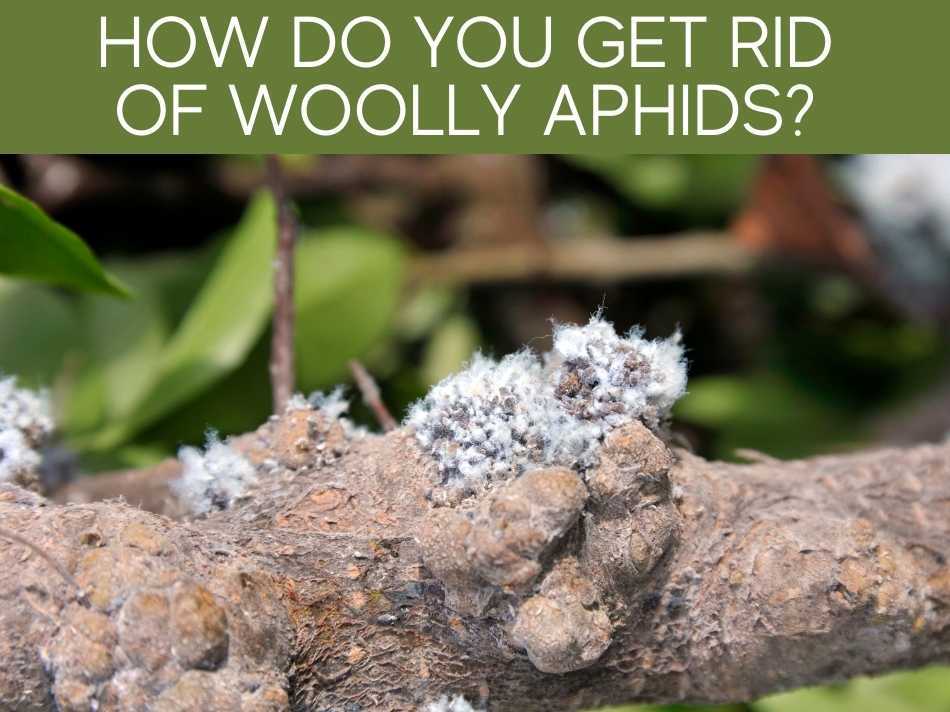
Woolly aphids are the more annoying, harder to kill cousin of the regular aphids you are used to seeing in your garden.
Woolly aphids have a waxy layer that covers their bodies which, much to the gardeners annoyance, renders most “natural” pesticides useless.
To get rid of woolly aphids you can introduce more of their natural predators to your garden, remove them manually, or in extreme cases use a systemic pesticide such as imidacloprid or dinotefuran.
Woolly aphids are generally managed by their natural predators, but if you don’t have enough of them in your garden you can always add some more!
Natural predators of woolly aphids are:
- Lady beetles
- Lacewings
- Hover Flies
- Parasitic wasps
Believe it or not you can purchase these helpful little insects and let them loose in your garden!
They will do all the hard work and you will reap the benefits.
You can also remove these waxy little aphids with a strong jet stream of water, or pick them off by hand.
If you are treating a tree or another strong plant, the water jet is probably the easiest and fastest way to go!
But if you are dealing with seedlings or delicate plants, you should not spray them down with a jet… that will do much more damage than the aphids!
How to get rid of woolly aphids using insecticide
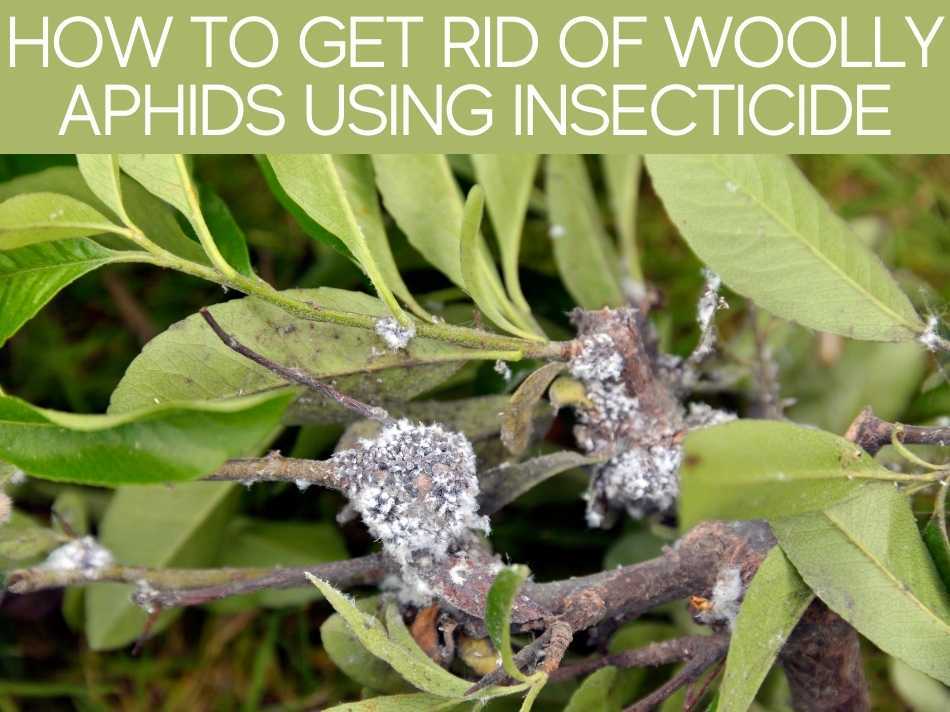
If you are not able to get a handle on the woolly aphid population using these natural methods, you may have to resort to using a chemical pesticide.
As mentioned before, woolly aphids are unaffected by traditional aphid remedies such as diatomaceous earth, oils and insecticidal soaps.
Their waxy coating protects them from these physical pesticides.
Using an imidacloprid or dinotefuran pesticide will be the most effective choice against woolly aphids.
Natural way to get rid of woolly aphids
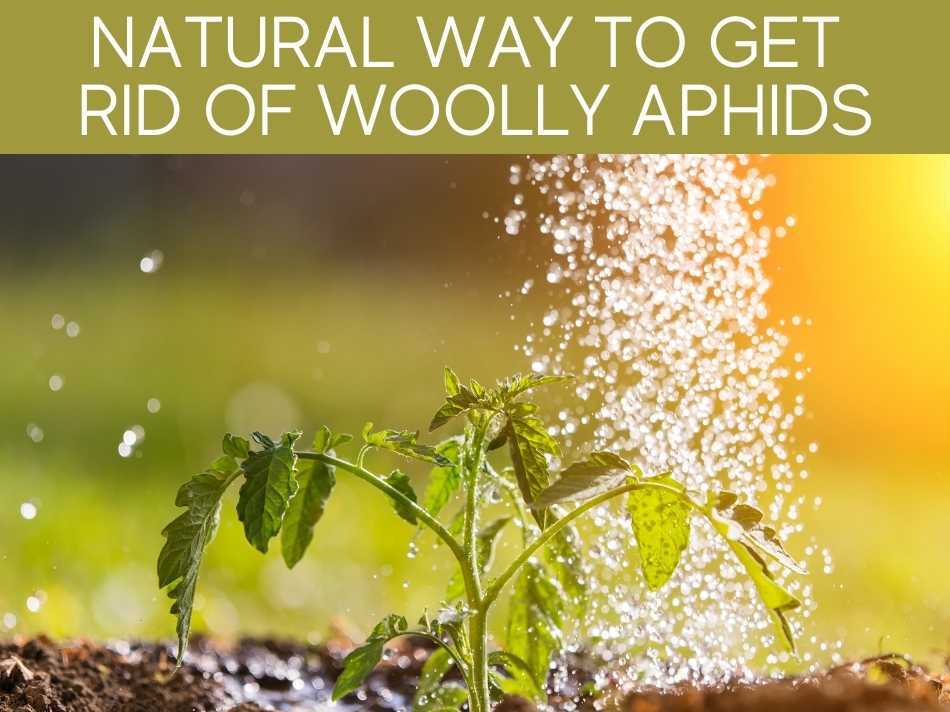
When dealing with pests of any kind, it is generally a good rule of thumb to start with the most natural remedies first.
Limiting the use of chemical pesticides to only extreme cases will help the overall health and habitat of your garden.
Natural ways to get rid of woolly aphids include:
- Picking them off by hand
- Spraying down the plant with a strong stream of water
- Increasing the natural predator population
If you are dealing with an early infestation or a pretty small colony of woolly aphids, it is easiest and gentlest to pick them off by hand.
However, if you are dealing with a tree or a sturdy and well established plant, you can also spray down the stems with a strong jet stream of water to dislodge the aphids!
If you are dealing with a colony (or garden) too big to hand pick the aphids, you may want to consider bringing in some more predators!
You can purchase bundles of insects, such as lady beetles, to naturally decrease the woolly aphid population!
I think that is a win-win-win!
Lady beetles get an all-you-can-eat buffet, your plants get to be free from woolly aphids, and you get to see a large number of beautiful lady beetles in your garden!
How to get rid of woolly aphids naturally
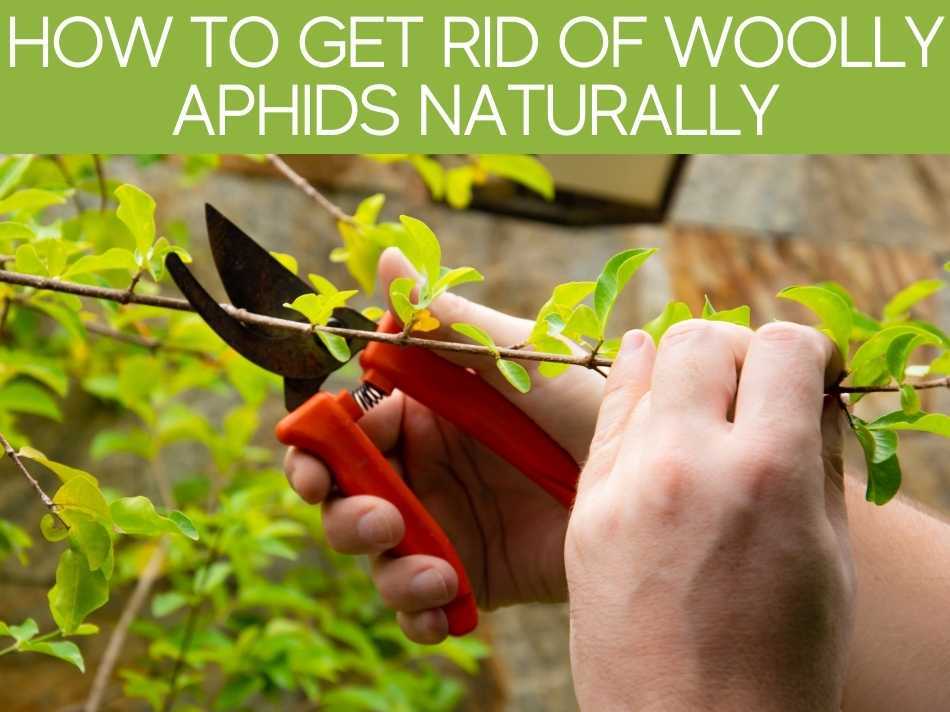
Woolly aphids can be persistent little buggers, but fortunately they aren’t too harmful to your plants.
Overtime, however, and with a big enough population, they can damage and deform to your plant’s stems, leaves and fruit.
Usually their natural predators keep the population under control so that they don’t cause this kind of extreme damage to your garden.
If you need to take action naturally against woolly aphids in your garden you can introduce more natural predators, spray them off with a jet of water, remove manually, or prune back your plant if feasible.
Check out our full guide for How To Get Rid of Aphids Naturally, keeping in mind that woolly aphids are not going to be affected by the insecticidal soaps, oils or diatomaceous earth.
Spraying down your plant with a jet of water is an extremely effective and simple way to get rid of woolly aphids!
Once they are dislodged from the plant they usually can’t climb back up.
Only use this method on strong and well established plants and trees, you don’t want to do more harm than good!
For more delicate plants try removing the aphids by hand or with a soft brush.
If you have a large garden or orchard, bringing in some more predators may be the best option!
Releasing lady beetles, lace wings or parasitic wasps will deplete the woolly aphids and hopefully keep them under control more long-term!
How to get rid of woolly aphids on houseplants
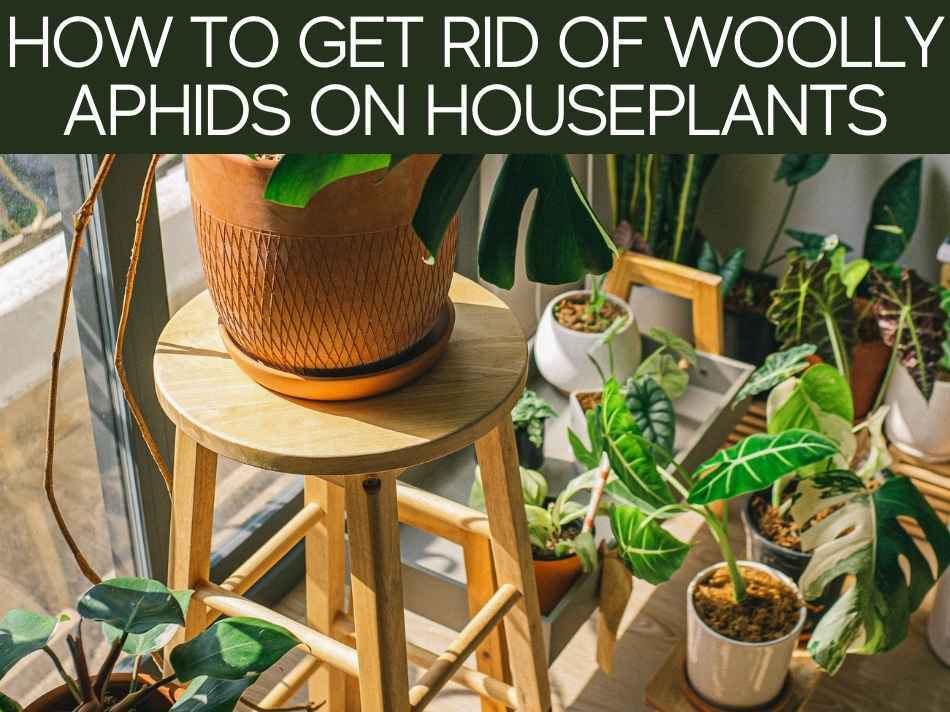
When dealing with woolly aphids on houseplants you can use most of the same methods as you would for outdoor plants.
However, you may not want a hundred parasitic wasps in your house, so maybe skip the option of bringing in additional predators.
To get rid of woolly aphids on houseplants you can remove them by hand or with a brush, or if they are strong enough you can bring them outside and spray them down with a strong jet of water. In extreme cases you can use an imidacloprid pesticide.
If you have houseplants that are suffering at the sticky hands of woolly aphids you will likely be able to get rid of them quite easily.
Use your finger, a brush or a cotton swab to gently wipe off the aphids and dispose of them.
This requires some patience, but your plants will thank you!
Check out our complete article on how to get rid of aphids on indoor plants.
If you have very strong and well established plants or trees indoors, you can get rid of the aphids by bringing them outside and jetting them off with water!
As long as your plants are strong enough to handle this, it’s an extremely effective (and admittedly fun and satisfying) treatment for a woolly aphid infestation!
How to get rid of woolly aphids on houseplants using insecticides
If it is absolutely necessary to use a chemical treatment for the woolly aphids on your houseplants, you will need to use some kind of systemic pesticide.
Woolly aphids are unbothered by physical pesticides such as neem oil or insecticidal soap, due to their waxy outer layer.
Systemic pesticides work by poisoning the pest when it consumes the plant.
Imidacloprid is an effective pesticide against woolly aphids, but please note that it is toxic to pollinators.
If you need to use imidacloprid on your houseplants, read this article to learn alternative ways to pollinate your indoor plants.
How to get rid of woolly aphids organically
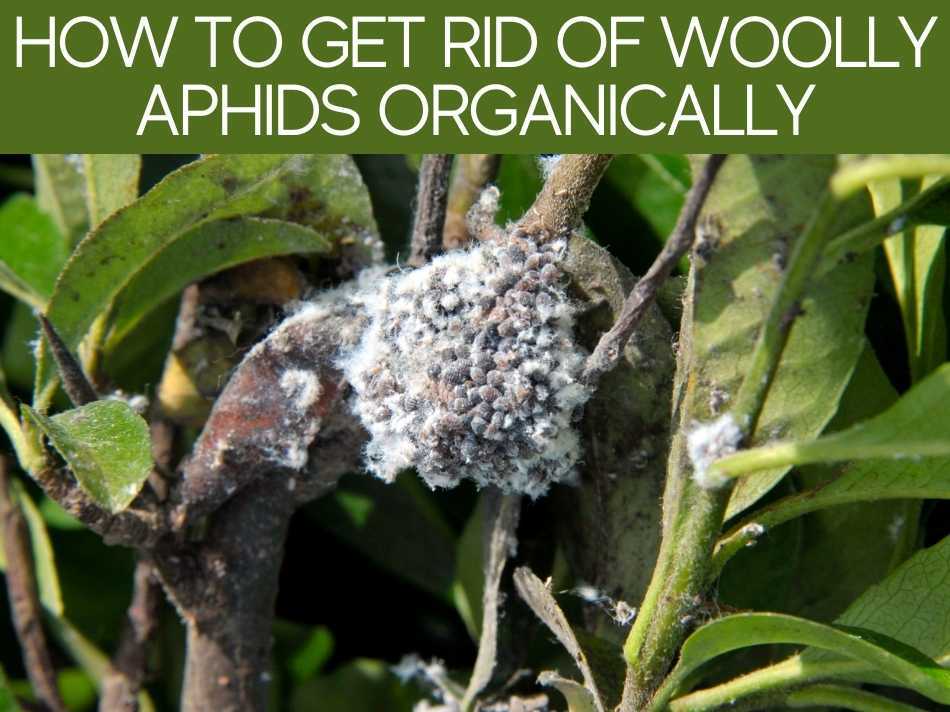
As with most pests, the best way to manage them is to prevent them!
To get rid of aphids organically you should first start with preventative measures. If you currently have an aphid infestation though the best ways to remove them are by hand, with water, or by means of natural predators.
So using slow-release organic fertilizers will help keep your garden less inviting to these sticky, waxy little guys!
However, if it is too late for you to establish an anti-aphid environment do not fear, there is still hope for the future!
Fortunately woolly aphids generally don’t cause a concerning amount of damage, so if there are only a few they can probably be left alone with regular monitoring.
But if you want to get rid of them organically, it’s pretty simple and effective!
You can:
- Pick them off by hand
- Brush them off with a brush or cotton swab
- Spray them off with a strong jet of water
- Increase the population of lady beetles, parasitic wasps or lacewings
Manually removing woolly aphids can be time consuming, but also very satisfying!
If you don’t have the time, or the infestation is too large you can also spray down the stems and underside of the leaves with a jet stream of water.
If you have a large garden you are wanting to control the aphid population in, you may want to consider bringing in some helping hands!
And by hands I mean legs, because lady beetles don’t exactly have hands… or feet for that matter.
I digress.
Bringing in natural woolly aphid predators such as lady beetles, lacewings or parasitic wasps is an organic and much more time saving way to get rid of an aphid problem!
How to control woolly aphids on apple trees
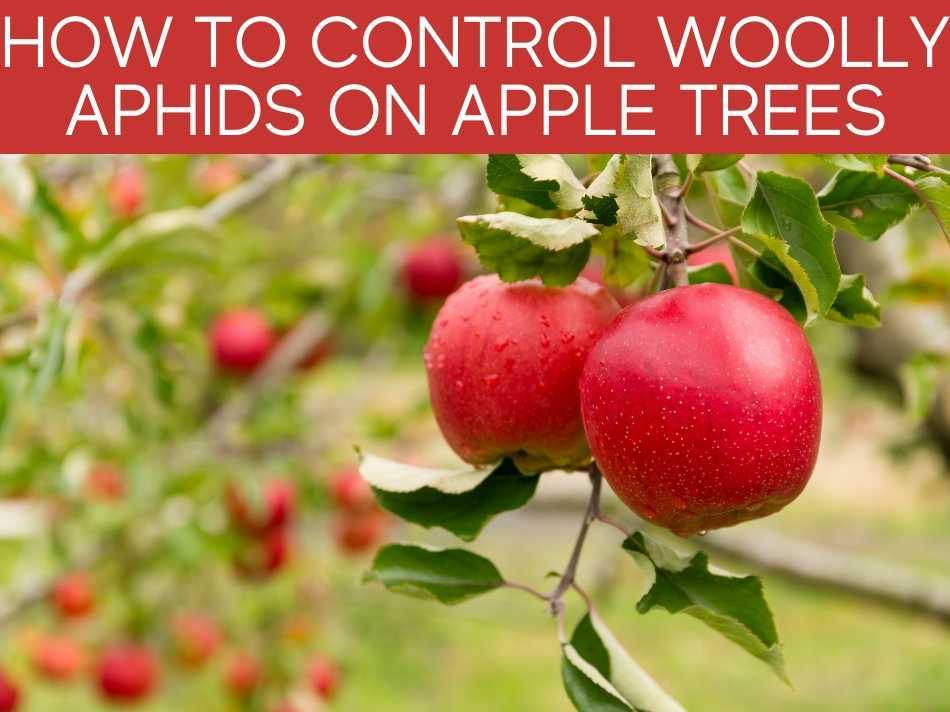
Apple trees are pretty tough, and generally won’t be too bothered by a couple of woolly aphids.
But if there is a large colony of woolly aphids they can cause deformed fruit, or the sticky honeydew coating on the leaves can limit photosynthesis.
To get rid of woolly aphids on apple trees you can strategically prune the trees, spray with a strong jet of water or use a systemic pesticide.
When planting an apple tree you may want to consider one with a rootstock that is resistant to woolly aphids.
For more information on rootstocks, this is a great resource.
But if prevention in this way is already out of the picture, there are some natural ways you can handle a woolly aphid attack!
Spraying down your apple tree branches with a strong hose jet is another easy, fast and effective way to get rid of a large amount of aphids.
If absolutely necessary, using chemical pesticides is also an option.
Be aware though, that the pesticides needed to kill woolly aphids are toxic to pollinators and other helpful insects.
Using imidacloprid or dinotefuran pesticides will kill the woolly aphids through the tree itself!
Woolly aphids generally don’t cause life threatening damage to trees, so you will need to weigh the risk vs. benefit when using these pesticides.
You can usually manage woolly aphids with prevention and early intervention!
How to get rid of woolly aphids on orchids
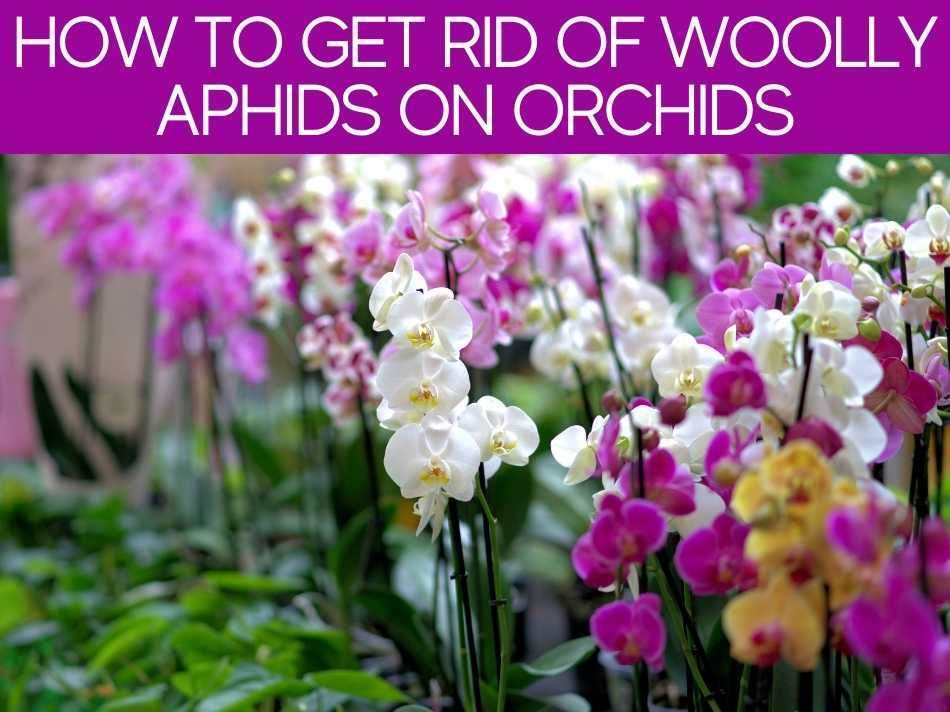
Orchids are absolutely beautiful, no wonder you want to rid them of these sticky, fuzzy looking pests!
To get rid of woolly aphids on orchids you can:
- Prune heavily infested areas
- Manually remove the aphids
- Spray stems with a stream of water
If possible, the easiest way to handle a large infestation of woolly aphids is to prune the areas that are most heavily populated.
These areas will also be the most damaged, so not only will it rid your flower of pests it will also improve the overall health of your orchid!
If it’s not feasible to prune back your orchid, you can also spray off the aphids with a stream of water!
Make sure you check under leaves, they love to hide!
If you are dealing with a fairly small infestation though, the easiest option may just be to remove them by hand or with a soft brush.
Your orchids will look so much nicer one they don’t have these wax covered bugs sucking their sap anymore!
How to stop aphids on vegetables
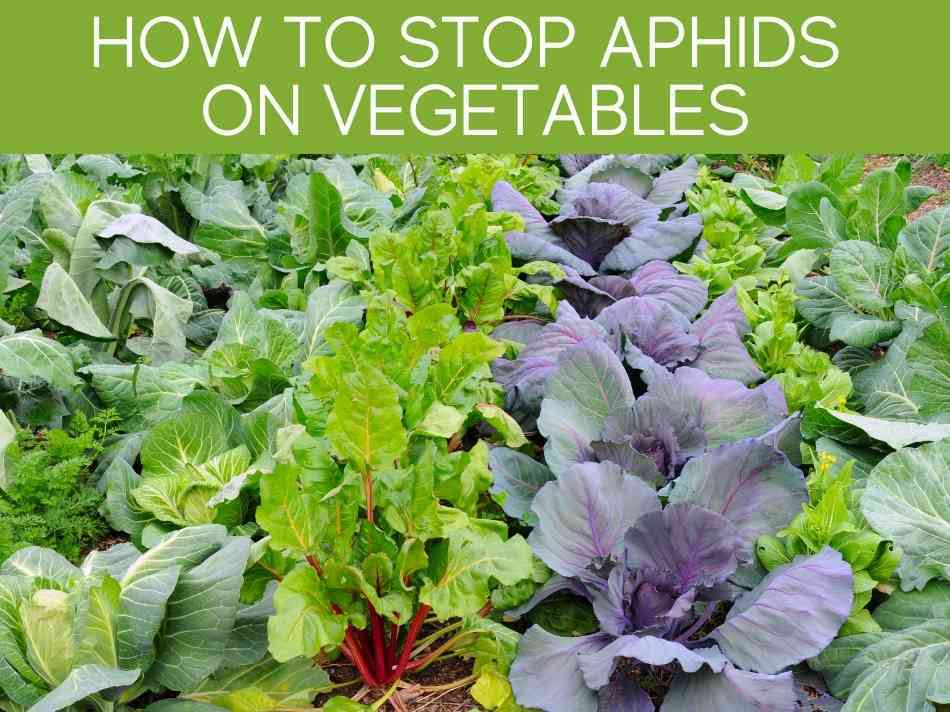
Woolly aphids can cause curled or wilted leaves on plants, but they can also cause deformities on the plant’s fruit!
Your vegetable garden is flourishing and you are relishing in the pride of your home grown food…
The last thing you want to see is wilted leaves and deformed or stunted veggies!
To stop woolly aphids on vegetables you can use a jet stream of water, bring in more natural predators or in extreme cases use chemical pesticides.
To prevent aphids in your vegetable garden it is important to make sure your soil is not too high in nitrogen.
Soil with high levels of nitrogen is a literal breeding ground for aphids!
Consider this when preparing your soil before planting.
But like they say, hindsight is 20/20 and sometimes it’s too late for prevention.
If you already have a woolly aphid problem in your vegetable garden, you should prioritize using natural and gentle methods first… aphids almost never need to be handled with extreme chemicals.
Try spraying down your plants with a jet of water, this dislodges the aphids and sends them far away!
If your garden is very large or the woolly aphids are really out of control, consider introducing some lacewing larvae or lady beetles.
These natural predators will do all the hard work for you, and you are providing them with an all-inclusive stay in your garden… all the aphids they could ever dream of!
How to get rid of woolly aphids in the garden
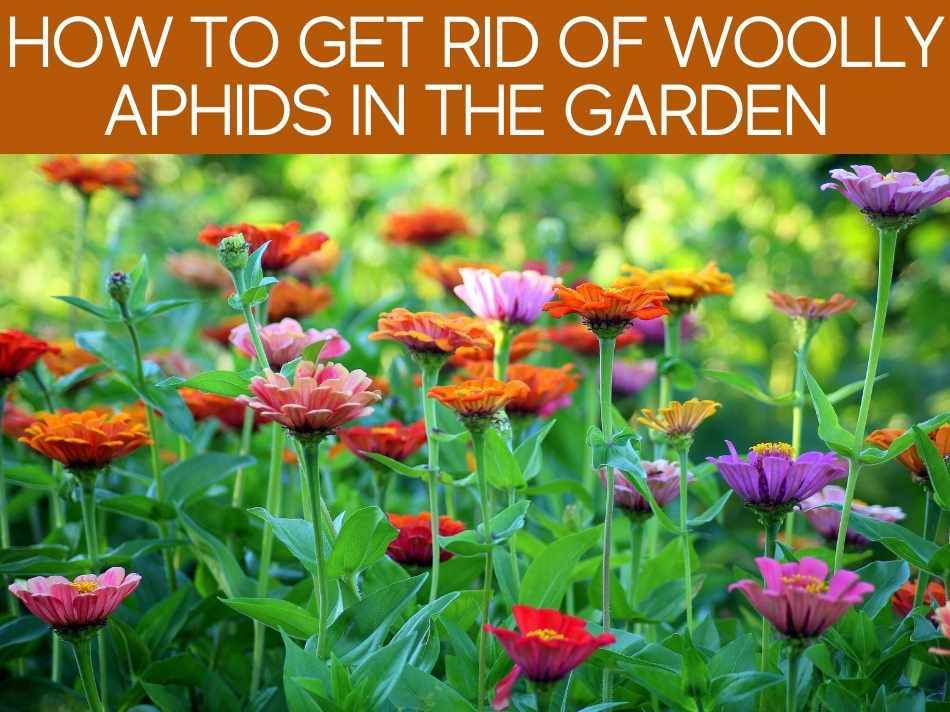
For more ideas, check out the complete article on How to Get Rid of Aphids in The Garden.
In really extreme cases, and when all else fails, you may need to resort to using chemical pesticides.
But remember, woolly aphids don’t respond to oils or insecticidal soap like regular aphids do.
You will need to use a systemic pesticide like imidacloprid that poisons the aphids by getting into the plant itself.
This is very effective but it is also highly toxic to bees and other pollinators, as well as other helpful insects.
